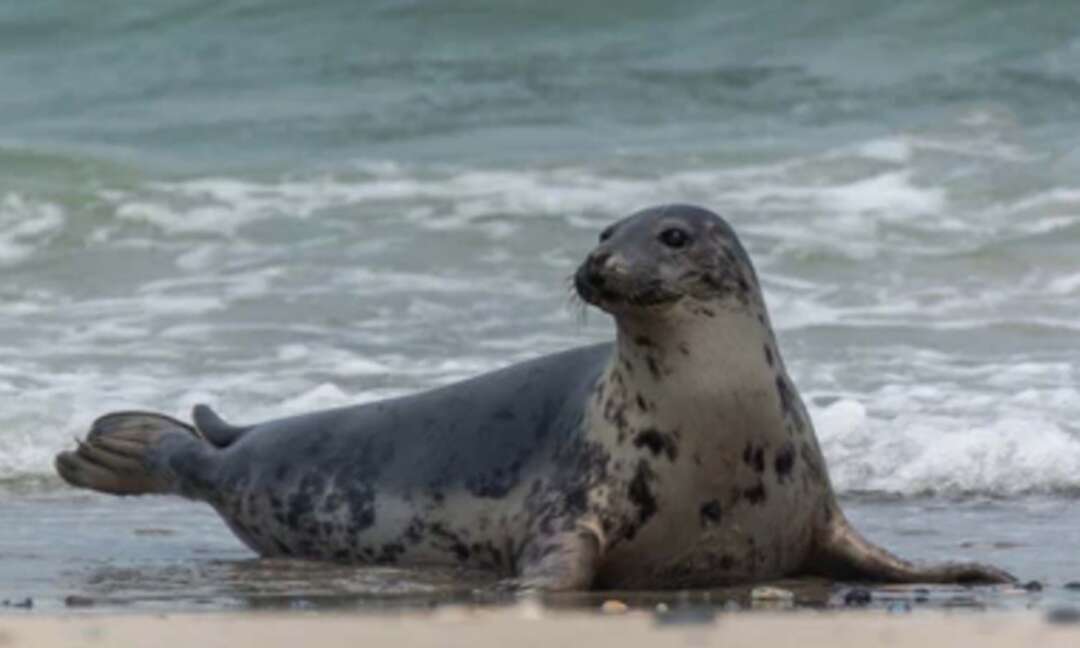-
Thames’ healthy seal population shows the river is teeming with life

The GBnews reported according to conservationists that despite a dip in numbers over the past two years, the Thames’ healthy seal population is proof the river is teeming with life.
According to the GBnews, a team of researchers from the Zoological Society of London (ZSL) found the river was home to 2,866 grey seals and 797 harbour seals following the most recent pupping season.
It said that apart from 2020 when the survey was paused due to the pandemic, the seals have been counted every year since 2013.
It mentioned that in 2019, 932 harbour seals and 3,243 grey seals – identifiable by their longer snouts – were counted.
The GBnews noted that although they are a protected species, they face a number of threats, including disease, marine litter, becoming entangled in “ghost nets” – abandoned fishing gear – and being hit by ship traffic.
It added, the seals are also vulnerable to disturbance when they are having their pups, particularly from curious members of the public, loose dogs and other water users like canoeists and kayakers.

In 2002, the population was badly hit by an outbreak of distemper virus, which provokes a number of symptoms including a rash, conjunctivitis and a bout of pneumonia that often proves fatal.
To monitor the population, researchers compare the seals from photographs taken from a light aircraft of different haul-out spots in the Thames Estuary over a period of three days.
The numbers are totted up and the final figure adjusted to account for the fact that a number of seals will always be out at sea.
Despite the fall in numbers, the research team said it was not definitive proof that the two populations of seals are facing difficulties.
Read more: Sea turtle death numbers drop in Angola due to environmental awareness campaigns
Conservation biologist Thea Cox said: “It is the long-term picture that is most significant, and that’s why it is important to do these surveys on a regular basis.
“Changes in number can be down to a few factors, such as the variability in the proportion of seals at sea whilst the survey is taking place, but this is something we want to keep a close eye on.”
Ms Cox said: “As top predators, (seals) are a great indicator of ecological health, so they tell us how the Thames is doing.”
The thriving seals show how far the recovery of the Thames has come since it was declared “biologically dead” in the 1950s.
“People think the Thames is dead because it is brown, but the Thames is full of life – the water quality has improved so much,” Ms Cox said.
She continued: “Seals have always been here, but there wasn’t necessarily the data on them so we wanted to understand how they use the Thames, where they go and their numbers.”
Read more: Boris Johnson reiterates his pledge to help the Afghans left behind by Britain
“Nationally some seal populations are going up and some are going down and we don’t necessarily know exactly the cause,” Ms Cox said.
“It could be do do with increased pupping, it could be to do with animals moving around the coastline nationally – it’s a question we would love to be able to answer.”
There is also competition between grey seals and harbour seals for space, and there have been instances of attacks by grey seals on harbour seals, Ms Cox said.
Near one of the seals’ favourite haul-out spots close to Ramsgate in Kent, plenty of plastic litter is dotted around the shoreline but it is not clear how much of a threat it poses to the animals.
Ms Cox said: “There is definitely some litter and there have been studies showing the extent that we see that in marine mammals."
“But knowing the impacts of that and the population level impacts – that’s something we also don’t know yet but there are lots of studies going into that to work out what level of threat that might be.”
Getting caught up in fishing gear, either as bycatch in nets cast by commercial fishing vessels or ghost netting, is less of a problem for the Thames seals than elsewhere, but still a cause for concern.
“Entanglement is a threat to seal populations, it is less of a problem here in the Thames but it is definitely a threat to populations of seals in general,” Ms Cox said.
“We are still trying to develop the evidence base about what those impacts on the animals actually are.”
Source: gbnews
Tags
You May Also Like
Popular Posts
Caricature
BENEFIT Sponsors BuildHer...
- April 23, 2025
BENEFIT, the Kingdom’s innovator and leading company in Fintech and electronic financial transactions service, has sponsored the BuildHer CityHack 2025 Hackathon, a two-day event spearheaded by the College of Engineering and Technology at the Royal University for Women (RUW).
Aimed at secondary school students, the event brought together a distinguished group of academic professionals and technology experts to mentor and inspire young participants.
More than 100 high school students from across the Kingdom of Bahrain took part in the hackathon, which featured an intensive programme of training workshops and hands-on sessions. These activities were tailored to enhance participants’ critical thinking, collaborative problem-solving, and team-building capabilities, while also encouraging the development of practical and sustainable solutions to contemporary challenges using modern technological tools.
BENEFIT’s Chief Executive Mr. Abdulwahed AlJanahi, commented: “Our support for this educational hackathon reflects our long-term strategic vision to nurture the talents of emerging national youth and empower the next generation of accomplished female leaders in technology. By fostering creativity and innovation, we aim to contribute meaningfully to Bahrain’s comprehensive development goals and align with the aspirations outlined in the Kingdom’s Vision 2030—an ambition in which BENEFIT plays a central role.”
Professor Riyadh Yousif Hamzah, President of the Royal University for Women, commented: “This initiative reflects our commitment to advancing women in STEM fields. We're cultivating a generation of creative, solution-driven female leaders who will drive national development. Our partnership with BENEFIT exemplifies the powerful synergy between academia and private sector in supporting educational innovation.”
Hanan Abdulla Hasan, Senior Manager, PR & Communication at BENEFIT, said: “We are honoured to collaborate with RUW in supporting this remarkable technology-focused event. It highlights our commitment to social responsibility, and our ongoing efforts to enhance the digital and innovation capabilities of young Bahraini women and foster their ability to harness technological tools in the service of a smarter, more sustainable future.”
For his part, Dr. Humam ElAgha, Acting Dean of the College of Engineering and Technology at the University, said: “BuildHer CityHack 2025 embodies our hands-on approach to education. By tackling real-world problems through creative thinking and sustainable solutions, we're preparing women to thrive in the knowledge economy – a cornerstone of the University's vision.”
opinion
Report
ads
Newsletter
Subscribe to our mailing list to get the new updates!






















